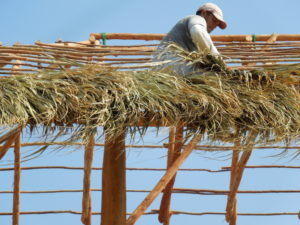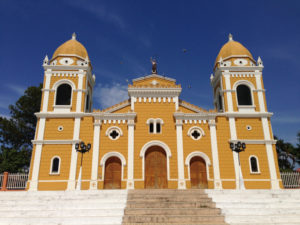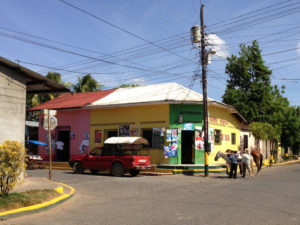About Nicaragua
When I ask friends in the U.S. about Nicaragua, they don’t seem to know much. Many of them remember the civil unrest of the 80’s, but somehow they missed the memo when it ended. Today, Nicaragua is arguably the safest, most peaceful country in Central America.
Nicaragua is the largest country of Central America and has three major regions. The mountainous central highlands produce almost all of Nicaragua’s number one export, coffee. To the east are the Caribbean lowlands, less populated than the other regions and less accessible due to a lack of infrastructure. And to the west are the Pacific lowlands, the country’s most populated region, with several of the major cities: León and Granada, famed for their Spanish colonial history and architecture, and Managua, the capital.
Detour’s coffee-focused itinerary visits the Pacific lowlands and central highlands. We start with León, a city of 175,000 situated between the Pacific to the west, Lake Managua to the east, and a chain of volcanoes to the north. Famed as a center for leftist politics, León was the launching point for the Sandinista revolution. The city is also famous for its colonial churches and perhaps the best modern art museum in Central America.

A worker weaves palm fronds into a rancho, or open-air palm roof, which provides shade from the tropical sun. Ranchos are very common in Nicaragua, where people depend on shade, and AC is a luxury.
Where the lowlands are hot and humid, the Central highlands are cooler and more comfortable – perfect for coffee farming. Coffee is the region’s biggest industry by far, and we’ll see coffee farms and mills buzzing with harvest activity as we travel around. We’ll have two days with Fincas Mierisch, a producer of specialty coffees, visiting several of their farms. We’ll also visit the dry mill – where all Fincas Mierisch beans are processed and tasted – for a private cupping.
We round out the tour in Granada, famous for its colonial history and beauty. Granada is the most touristy city in Nicaragua – but that’s not saying much. While a small neighborhood caters to gringos, a few blocks’ walk puts you in the middle of the bustling city market, which has nothing to do with tourists and everything to do with daily life. Nearby attractions like Lake Nicaragua, with its beaches and numerous small islands, draw plenty of locals and tourists alike.

This beautiful church sits on the town square of Masatepe, famous for its handcrafted wood furniture.
We also check out the Pueblos Blancos (“White Villages”), a group of small communities near Granada, each famous for some kind of trade or crafting. For example, Masatepe is known for handmade wood and rattan furniture; San Juan de Oriente for pottery; and Catarina for growing plants for the home and garden. You can tell where one town stops and another starts by the prevalence of furniture store, plant nurseries, and so on.


Write Your Comment